As the hour grew late on the night of January 31, 2020, the chief medical adviser to the United States President, Anthony Fauci, was frantically exchanging emails with some of the world’s leading virologists.
A highly infectious virus was on the brink of contaminating the globe. President Donald Trump had hours earlier announced a ban on flights into the US from China, and the question loomed large, how did this virus start?
Emails that night and into the next day between Fauci – then director of the National Institute of Allergy and Infectious Diseases (NIAID) at the US National Institutes of Health (NIH) – and scientists show their first responses to examination of the virus. The correspondence, some of it secret until this month, betrays alarm that the new coronavirus showed signs it could have been genetically engineered in a Wuhan laboratory as the result of highly fraught research known as “gain of function” that can make viruses vastly more contagious and dangerous to humans.
At 10.30pm on January 31, Kristian Andersen, a leading scientist working at Scripps Research in California, wrote to Fauci to say: “The unusual features of the virus make up a really small part of the genome so one has to look really closely at all the sequences to see that some of the features [potentially] look engineered.”
Andersen – with reference to colleagues including Australian Eddie Holmes, a professor of virology at the University of Sydney and an honorary professor in Shanghai – also stated that “after discussions earlier today, Eddie, Bob, Mike and myself all find the genome inconsistent with expectations from evolutionary theory”.
Inconsistent with evolutionary theory.
Fauci was to grow even more concerned when his deputy, Hugh Auchincloss, emailed on February 1 to say this particular gain of function research could have been funded by the United States Government in breach of strict rules the US had imposed on such experiments in coronavirus research.
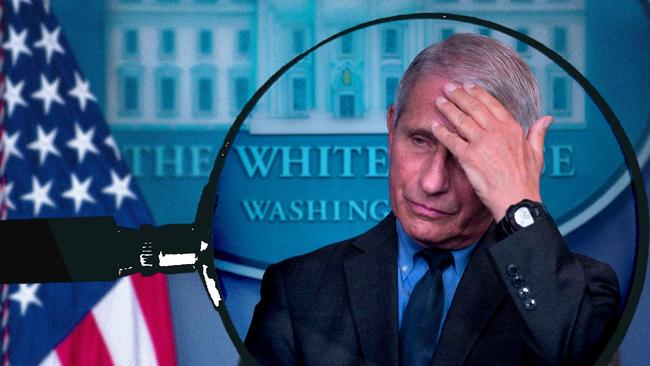
During this 24-hour period, Andersen would locate a scientific paper documenting the Wuhan Institute of Virology’s genetic engineering of coronaviruses – it was practically a “how-to-manual for building the Wuhan coronavirus in a laboratory”, according to Dr Jeremy Farrar, a British medical researcher and member of the UK Government’s Scientific Advisory Group for Emergencies, writing in a memoir. Farrar recalls that Holmes’s reaction to seeing that paper was: “F..k, this is bad,” before jumping on a call to discuss the matter with him. Farrar would later see fit to acquire a burner phone.
What the scientists did next is shocking.
Instead of disclosing their suspicions to the world, Fauci and his NIH colleagues engineered a narrative to distract attention from contentious research funded by the US, and convince the world this was more likely a natural born killer rather than one created by scientists.
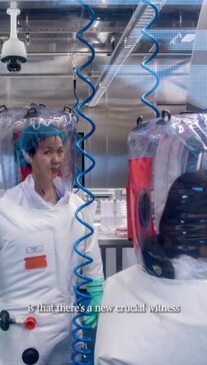
Robert Kadlec, who was Assistant Secretary for the US Department of Health during the pandemic – and formerly Anthony Fauci’s boss – has given an interview to The Weekend Australian Magazine. He has disclosed that publicly the NIH was eager to secure cooperation from China in the hope that Beijing would share a sample of the virus. “There was something that could be said to turn the temperature of rhetoric down,” says Kadlec, who would later go on to lead the US government’s Operation Warp Speed, the race to develop a Covid-19 vaccine. “We were trying to prevent people from saying this was a bioweapon when we didn’t really know.”
The NIH would ask the National Academy of Sciences to further probe the origins of the virus, he adds. Kadlec would never be informed by Fauci as to the scientists’ earliest observations, or their decision to bury their fears to protect their research. He says: “Their initial opinion was likely shaded by their personal professional equities or the belief that what was going on in the US – statements by political leaders – could be problematic for world relations for China [and] also their professional interests in science.”
When confronted over their initial assessment of the virus, the scientists have argued variously in media and in congressional hearings that subsequent investigation into the virus had led them to scotch their first fears of a lab leak – and to conclude instead that the origins of Covid-19 were zoonotic, i.e. the virus had been passed from animal to human, possibly via a Wuhan wet market.
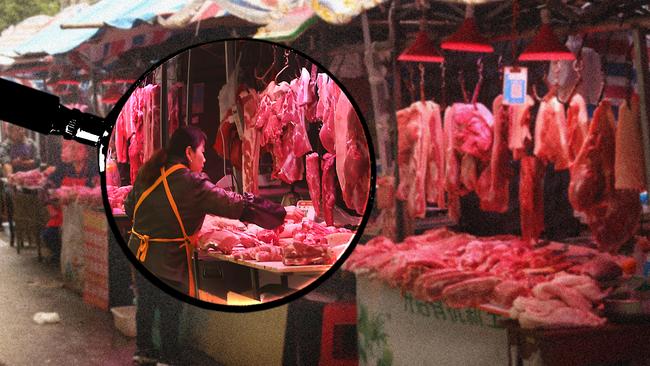
However, new correspondence subpoenaed and disclosed by US Congress in recent weeks pinpoints the moment this group began steering world attention away from the Wuhan lab. It was not months, or even weeks, but within days and hours of their realisation that the virus may contain “fingerprints” that connected it to the Wuhan Institute of Virology. The scientists are facing allegations that they embarked on a campaign of subterfuge that has rocked Washington. The consequences of their actions have been catastrophic – our understanding of a virus that went on to change the world has been shrouded in secrecy. Crucially, it stymied the hunt for patient zero – the first known case – from the start.
In my investigation into the origins of Covid-19, now spanning three years, I’ve reported on classified intelligence and unearthed documents about the Wuhan Institute of Virology that the World Health Organisation had failed to discover. The fruits of this investigation have been cited in several congressional reports. One of these revelations was that a Wuhan Institute of Virology scientist I identified as Ben Hu had been conducting “gain of function” research projects right before the outbreak of the pandemic, along with his boss Shi Zhengli, the so-called “bat lady” who became the face of coronavirus experimentation in China.
As a result of their work, Ben Hu was awarded grants to study two new SARS-related coronaviruses, and significantly, to investigate if these viruses could infect humans – work that commenced in January 2019. Last month Ben Hu was named by independent media as the most likely patient zero, the first known person to be infected with Covid-19.
And yet the burning question remains, how did the pandemic start?
In a front-page story in June 2021, The Weekend Australian revealed that intelligence agencies from the Five Eyes (an alliance between Australia, the US, the UK, Canada and New Zealand) were investigating the unexplained death of a People’s Liberation Army scientist named Zhou Yusen, who had conducted risky coronavirus research while developing one of the world’s first Covid-19 vaccines on behalf of the Chinese military.
There is now, The Weekend Australian Magazine can reveal, a growing school of thought within the US intelligence services that work by Zhou Yusen to develop a vaccine for the Chinese military could have inadvertently led to the creation of Covid-19 and the first cluster of the pandemic. Intelligence agencies believe the scientist was killed by the People’s Liberation Army – and it’s understood that a close family member, who is currently residing in the US, has been interviewed on multiple occasions by the FBI.
November 2019. Months before the world had heard of Covid-19 and the prospect of a pandemic sparking stay-at-home orders was as remote as alien arrivals, a piece of intelligence collected from a foreign government was passed to US agencies. The intelligence told of how several researchers at a laboratory in the biggest city in central China were sick with a virus and some had been hospitalised. Some of the symptoms were indicative of Covid-19, including a loss of taste and smell, while others were consistent with seasonal flus and viruses.
At the moment this communication intercept was collected, it was deemed so insignificant as to go unnoticed – its importance would only be understood when a covert team inside the US State Department began investigating the origins of the pandemic in September 2020. That team was led by acting Assistant Secretary of State Thomas DiNanno at the Bureau of Arms Control, Verification and Compliance. While not conclusive about the particular origins of the virus, the intelligence was of explosive significance to DiNanno’s team because they believed it linked the earliest known cases of Covid-19 to the Wuhan Institute of Virology.
In March 2021, half a world away from the US State Department, on the front page of The Australian newspaper we revealed the classified intelligence that Wuhan Institute of Virology researchers had fallen ill. In our report, headlined “China Covid researchers ‘in first cluster’”, we reported: “Wuhan Institute of Virology researchers working on coronaviruses were hospitalised with symptoms consistent with Covid-19 in early November 2019 in what US officials suspect could have been the first cluster.”
Almost this precise paragraph would feature in the New York Times two years later. Following The Wall Street Journal’s report on the cluster in May 2021, President Joe Biden ordered the US intelligence agencies to conduct a 90-day probe into the origins of the pandemic. It would conclude both a natural origin and inadvertent laboratory incident were plausible explanations for the pandemic.
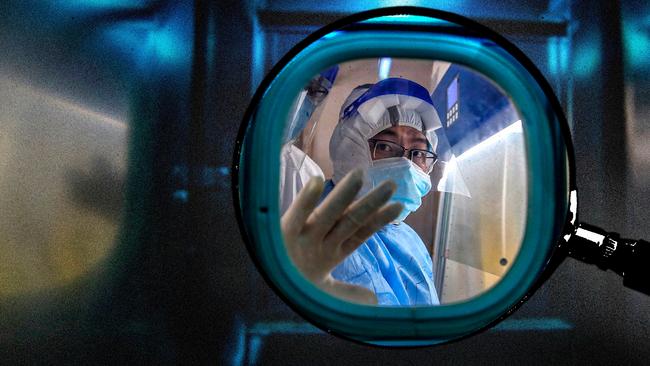
Significantly, The Australian’s story went on to reveal that “the US is also examining whether the Wuhan institute developed SARS-CoV-2 [the virus that causes Covid-19] while working on a coronavirus vaccine” – a statement based on classified intelligence that would finally be released to the public in June this year, after both sides of Congress voted unanimously to declassify intelligence related to the Wuhan Institute of Virology and the origin of the pandemic.
Ben Hu and his colleagues Yu Ping and Yan Zhu were identified in media reports in June 2023 as the three workers who fell sick. All were from Shi Zhengli’s laboratory at the Wuhan Institute of Virology. Intelligence has suggested they were hospitalised in the first and second week of November – well before a cluster of cases in December were traced back to the Wuhan wet market. There may be cases we do not know about yet, but Ben Hu and his two colleagues were indeed the first victims of the new coronavirus known to intelligence agencies. In a statement given to the US journal Science, Ben Hu denies ever having fallen ill.
So could Ben Hu’s work have resulted in the creation of SARS-CoV-2? In short, yes – he was conducting gain of function experiments to make coronaviruses more transmissible to humans, creating chimeric viruses and devising a new reverse genetics technique.
The two viruses from his experiment right before the pandemic (see fact box below) have never been published. These are not the only viruses from the Wuhan Institute to remain secret. The Wuhan institute of Virology’s database, containing more than 22,000 viruses, was taken offline in September 2019, and Chinese officials have refused to make it available to world health investigators ever since.
I have interviewed the former Secretary of State Mike Pompeo twice on the origins of the pandemic. He certainly believed Ben Hu and his colleagues were, from everything he had seen, the first cluster of the pandemic. Epidemiological analysis has shown they would have likely been exposed to the virus in late October. Given the incubation period, symptoms often appear in the second week of infection by the coronavirus.
Some within the United States Government – including Kadlec – now suspect it was vaccine research by People’s Liberation Army scientist Zhou Yusen that may have led to the pandemic. Like Ben Hu, Zhou was also close to Shi Zhengli. Zhou was a decorated Chinese military scientist who worked on coronaviruses at the Beijing Institute of Microbiology and Epidemiology, which is part of the Chinese Academy of Military Medical Sciences and sits under the control of the People’s Liberation Army. His work for the Chinese military was extensive and he often worked alongside the Wuhan Institute of Virology and Shi Zhengli.
As we revealed in a global exclusive published on the front page of The Weekend Australian, a patent application for a Covid-19 vaccine had been filed by the Institute of Military Medicine, Academy of Military Sciences of the People’s Liberation Army on February 24, 2020. The application listed Zhou Yusen as lead inventor and came just one month after China admitted Covid-19 was capable of human-to-human transmission. The patent would likely have resulted from work on a vaccine starting in November, according to leading vaccinologists consulted by US health officials.
The Weekend Australian Magazine has now learned it is specifically Yusen’s work for the military on coronavirus vaccines that US intelligence agencies are examining as a possible cause of the pandemic.
Three months after he filed the patent for one of the world’s earliest Covid vaccines, Zhou is believed to have died. Despite an illustrious career his death went almost unreported in China, although there is a mention that he is “deceased” on a paper he authored. As Senate Select Committee on Intelligence Vice Chairman Marco Rubio’s report on China’s response to the pandemic (which credits my book What Really Happened in Wuhan with first reporting on Zhou publicly) observes: “No PRC [People’s Republic of China] media reports disclosed the cause of his death.”
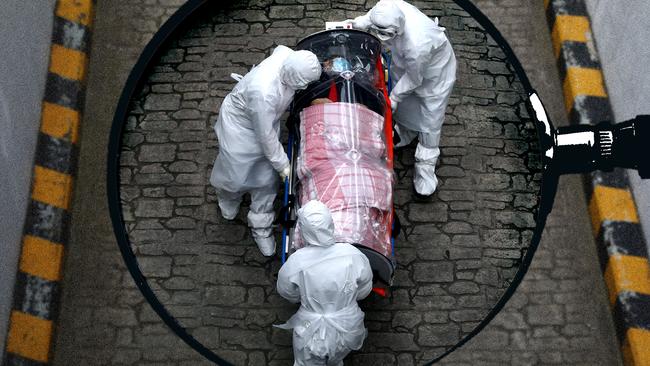
We discovered and reported in June 2021 as part of our investigation into the origins of the pandemic that Five Eyes intelligence agencies were investigating Zhou’s unexplained death as part of their probe into Covid-19. This was classified intelligence that would subsequently be republished by NBC News, Vanity Fair and The Sunday Times in the UK.
Perhaps no one has analysed more of Zhou Yusen’s papers than Bob Kadlec, one of the top health officials in the US administration at the time of the pandemic. “We think vaccine research resulted in the pandemic – that vaccine research was the proximate cause,” he tells this magazine.
Kadlec notes that the type of coronavirus vaccine research Zhou Yusen was involved in was “very high risk” because it involved infecting live animals, administering some of them with the vaccine and using others as a control, and then keeping them alive for a period of days or even weeks before eventually euthanising them.
The risk of contamination at the Wuhan Institute of Virology was especially acute because the laboratory was experiencing problems with its air ventilation systems.
“The process where you have to manage the infected animals – collecting serial samples of blood, urine or saliva for a period of days or weeks – puts a high demand for biosafety,” Kadlec says. “[You have to be] very careful and safe and all your systems have to work. It’s very high-risk.”
The research team for my book analysed some 136 tenders dating back to the set-up of the Wuhan Institute of Virology in 2014. A winning bid for air incinerators and testing services worth $US43,000 – in the critical month of December 2019 – is evidence that there was concern about ventilation and the risk of an infectious aerosol escape.
Kadlec’s own investigation, published as a report in April 2023, originally commissioned by Senator Richard Burr, confirms that the Wuhan Institute published 13 patents correcting biocontainment-related problems.
Kadlec gives this incisive assessment of the scenario that led to the first cluster: “They were likely working on a vaccine, it looks like they had a bio-containment failure, possibly an autoclave, and that’s the period when Ben Hu and his colleagues fell sick, likely with Covid.
“It all clusters in the November 11-17 timeframe when the WHO SAGO [the World Health Organisation’s Scientific Advisory Group for Origins of Novel Pathogens] says there was an outbreak of influenza. That would imply some kind of event.”
Just as this article was going to press, news agency Bloomberg reported that the Biden administration was taking steps to impose a 10-year ban on funding for the Wuhan Institute of Virology. The NIH’s conclusion that the Wuhan lab “likely violated protocols of the NIH regarding biosafety is undisputed”, wrote an official in a memo obtained by a Congressional sub-committee.
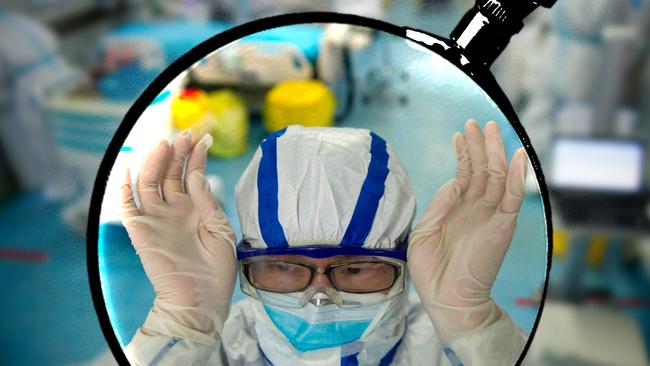
Kadlec suggests Ben Hu may have been working with military scientist Zhou Yusen. “We don’t have all the answers here but perhaps Ben Hu was assisting the visiting professor, Zhou Yusen. He was an accomplished vaccinologist. He had developed vaccines for flu, MERS and the like, and perhaps somebody said, ‘Make sure that Dr Zhou gets what he needs.”
A close relative of Zhou Yusen lives in the US; although I reported this fact in my book, I withheld the individual’s name for their privacy and security. I have learned that following the book’s publication the family member’s significance and whereabouts came to the attention of an intelligence agency in the United States and The Weekend Australian Magazine now understands the FBI has twice spoken to this crucial witness in the hope they hold clues to the origin of the pandemic. The FBI declined to comment.
The FBI’s first interview was understood to have taken place in 2022, while another occurred earlier this year. FBI director Christopher Wray told Fox in April: “The FBI has assessed for quite some time that the origins … are a potential lab incident in Wuhan. You’re talking about a potential leak from a Chinese-government controlled lab that killed millions of Americans …”
The family member did not respond to requests for comment in the weeks leading up to publication of this article. The Weekend Australian Magazine has also refrained from disclosing this person’s name and place of work in the US.
We now return to early 2020, as January gave way to February and the world sleep-walked toward lockdowns spurred by the fear, mystery and secrecy surrounding the origins of coronavirus. Within weeks, Tony Fauci would become “America’s doctor” – reassuringly doling out advice on mask-wearing and handwashing.
But on January 31, 2020, hearing virologists’ concerns that SARS-CoV-2 appeared genetically engineered, and fully aware that his institution, the NIAID, had funded risky research in Wuhan, Fauci appeared to be panicking.
This email from Fauci to his deputy Hugh Auchincloss not long after midnight came to light after a Freedom of Information Act inquiry from BuzzFeed in 2021: “It is essential that we speak this am. Keep your cell phone on. I have a conference call at 7.45am with [Health Secretary Alex] Azar. It likely will be over by 8.45am. Read this paper as well as the email that I will forward you now. You have tasks today that must be done.” The paper attached detailed the 2015 gain of function research where a deadly new virus was created by Shi Zhengli with the University of Carolina’s Ralph Baric. It was indeed funded by the NIH. The subject of Fauci’s email was: “Baric, Shi et al – Nature Medicine – SARS Gain of function”, a reference to the Nature Medicine journal that would publish a narrative on the origins of Covid-19 two months later.
–
“I think Tony Fauci was trying to protect his institution and his own reputation from the possibility that his agency was funding the Wuhan Institute of Virology researchers.”
–
The reply the next morning at 11.47am from Auchincloss held answers that were not what Fauci was hoping for. “The paper you sent me says the experiments were performed before the gain of function pause but have since been reviewed and approved by NIH. Not sure what that means … ” Auchincloss said there was an effort to “try to determine if we have any distant ties to this work abroad”.
Fauci had emailed Jeremy Farrar on the afternoon of January 31 to say: “Jeremy, I just got off the phone with Kristian Andersen and he related to me his concern about the Furine [sic] site mutation in the spike protein of the currently circulating 2019-nCoV … I told him that as soon as possible he and Eddie Holmes should get a group of evolutionary biologists together to examine carefully the data to determine if his concerns are validated. He should do this very quickly and if everyone agrees with his concern, they should report it to the appropriate authorities. I would imagine that in the USA this would be the FBI and in the UK it would be the MI5.”
Taking up Fauci’s suggestion, the group of evolutionary biologists held a call the very next day where they decided to write a paper that would be titled “The proximal origin of SARS-CoV-2”. Fauci and National Institute Health director Francis Collins were on the call.
Robert Kadlec was unaware of the extent of the virologists’ concerns that SARS-CoV-2 was the result of laboratory research. In fact, two and a half hours after the email to his deputy, at nearly 3am, Fauci took a different tone when he sought to reassure his boss that everything was under control. Fauci instead shared a paper that downplayed the likelihood of a laboratory leak; he made no mention of the suspicions expressed by some of the world’s leading virologists, on that very night, that the virus could have been genetically engineered.
The email sent at 2.48am from Fauci to Kadlec was the first sign that a concerted cover-up was underway.
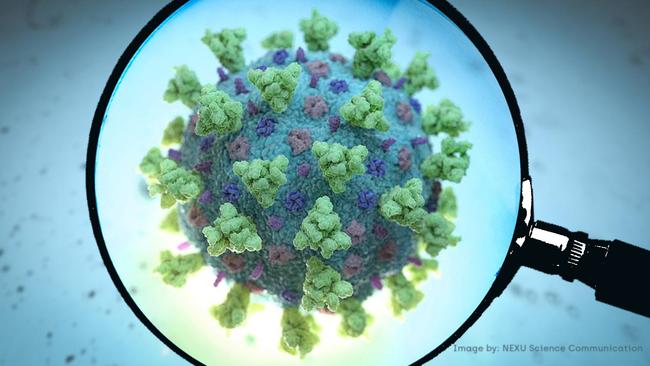
Kadlec tells this magazine: “I think Tony Fauci was trying to protect his institution and his own reputation from the possibility that his agency was funding the Wuhan Institute of Virology researchers who, beyond the scope of the grants received from the NIH, may have been working with People’s Liberation Army researchers on defensive coronavirus vaccines. I think it’s evident from his later released emails [obtained via Freedom of Information requests] that it was more he had more sense of what his institute had funded at that moment. This was a reputational risk to him and his institute and certainly he probably sided with the international scientists that believed that false or unsubstantiated accusations could have a chilling effect on scientific collaboration between the western world and China.”
Fauci has not responded to requests for comment.
Among hundreds of new emails and Slack messages subpoenaed by Congress that came to light on July 11 this year is the following email, from Fauci’s senior adviser David Morens to a journalist at Bloomberg News: “ … today, to my total surprise, my boss Tony actually ASKED me to speak to the National Geographic on the record about origins. I interpret this to mean that our government is lightening up but that Tony doesn’t want his fingerprints on origin stories”.
Along with tens of hours of recorded interviews, the cache of correspondence has provided the clearest picture yet of how some of the scientists who were worried this was a lab leak ended up insisting a potential laboratory origin was a conspiracy theory.
On February 2, the distinguished British evolutionary biologist Andrew Rambaut wrote on a group channel on the messaging platform Slack: “Given the shit show that would happen if anyone serious accused the Chinese of even accidental release, my feeling is we should say that given there is no evidence of a specifically engineered virus, we cannot possibly distinguish between natural evolution and escape so we are content with ascribing it to natural processes.”
Andersen replied, according to the Slack messages contained in the House Select Committee’s July 2023 report: “Yep, I totally agree that that’s a very reasonable conclusion. Although I hate when politics is injected into science – but it’s impossible not to, especially given the circumstances.”
On the same date, another scientist, Professor Ron Fouchier from the Erasmus Medical Centre in Rotterdam, sent an email suggesting they should put on hold further discussions about a potential lab leak – and that these suggestions would need to be “supported by strong data, beyond reasonable doubt”. (It’s worth noting that any theories as to a natural origin for Covid-19 were never subject to the need to be supported beyond reasonable doubt.) Fouchier wrote: “It is good that this possibility was discussed in detail with a team of experts. However, further debate about such accusations would unnecessarily distract top researchers from their active duties and do unnecessary harm to science in general and science in China in particular”.
Fauci’s NIH colleague Collins sent an email, also on February 2, 2020, agreeing with Fouchier’s overall position. “Though the arguments from Ron Fouchier and Christian Drosten are presented with more forcefulness than necessary, I am coming around to the view that a natural origin is more likely,” he wrote to Farrar, Fauci and others. “But I share your view that a swift convening of experts in a confidence-inspiring framework (WHO seems really the only option) is needed, or the voices of conspiracy will quickly dominate, doing great potential harm to science and international harmony.”
Several days later, Fouchier expressed his view even more explicitly that including the possibility of a laboratory leak could directly impact on science experiments.
On February 8, Fouchier wrote to Farrar, Holmes, Rambaut and the others: “This manuscript would be much stronger if it focused on the likelihood of the first two scenarios as compared to intentional or accidental release. This would also limit the chance of new biosafety discussions that would unnecessarily obstruct future attempts of virus culturing for research and diagnostic purposes for any (emerging/zoonotic) virus.”
Two days later, Holmes shared a draft of their paper with Farrar, who immediately sent it to Fauci and Collins.
“In response to the draft, both Dr Fauci and Dr Collins expressed concern regarding the paper’s inclusion of serial passage in a lab as a viable origin option,” the oversight committee wrote in its report on its proceedings published earlier this month.
Farrar requested a specific change to their paper, saying: “Sorry to micro-manage/microedit!” He asked them to change the wording that it was “unlikely” that Covid-19 emerged through laboratory manipulation of an existing SARS-related coronavirus to “improbable”.
When epidemiologist Ian Lipkin emailed Farrar to thank him for “shepherding this paper”, he expressed concerns that “rumours of bio weaponeering are now circulating in China”. Farrar responded: “Yes I know and in US – why so keen to get out ASAP. I will push Nature.”
That same day, Lipkin, whose name was ultimately included on the eventual Proximal Origins paper, appeared to raise fresh concerns that Covid-19 came from a laboratory. “Ian Lipkin just called – very worried about the furin cleavage site and says that high ups are as well, inc. intel,” Holmes wrote in an email to Rambaut on February 10, 2020.
After a draft of the paper was shared with him, Lipkin wrote: “It’s well reasoned and provides a plausible argument against genetic engineering. It does not eliminate the possibility of inadvertent release following adaptation through selection culture in the institute in Wuhan. Given the scale of the bat CoV research pursued there and the site of emergence of the first human cases we have a nightmare of circumstantial evidence to assess.”
They would never assess that “circumstantial” evidence – which I began to unpick just two months later, in April 2020. Instead, the group forged ahead. The paper that Nature Medicine published on March 17, 2020 was designed to quash any suggestion of a laboratory leak. It states: “Our analyses clearly show that SARS-CoV-2 is not a laboratory construct or a purposefully manipulated virus,” adding: “We do not believe that any type of laboratory-based scenario is plausible.”
These words, published by a prestigious journal, became gospel – cited as the first and last word on the origins of the virus. As Collins would comment shortly after publication, “This study leaves little room to refute a natural origin for Covid-19”.
Kadlec, revealing for the first time what unfolded behind the scenes, explains: “When we talked about this in advance of that call, he [Fauci] would just try and see if he could get the scientists to take the temperature down, turn the rhetoric down … we’re going to look into this but we don’t know … There was something that could be said to turn the temperature of rhetoric down and avoid the wild speculation of a bioweapon that had already started at that point in time,” he says.
“We decided to engage our national experts to look at this, the National Academy of Sciences. It would take time to figure out what was going on.
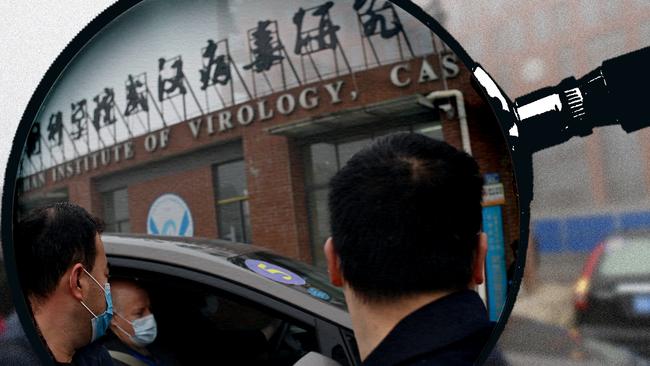
“That was my intent, it was Dr Fauci’s idea to see if we could get international scientists to examine the origins in a similar fashion. The objective was to prevent speculation and turn the temperature down.”
However, Kadlec says, he found it “really odd … in light of the now revealed private musings” of the scientists who thought features of the virus looked unusual but then drafted an opinion piece arguing the opposite – and that, further, “many people were confused or mistaken by what they wrote as more of a peer reviewed paper.
“Their initial opinion was likely shaded by their personal professional equities or the belief that what was going on in the US – statements by political leaders – could be problematic for world relations for China [and] also their professional interests in science,” he tells this magazine.
“Their paper did result in casting the die for what would then be the international scientific response going forward.”
Eddie Holmes, one of the scientists on that email correspondence and a co-author of the Proximal Origins paper published in Nature Medicine, still maintains there’s no evidence Covid-19 originated in a laboratory. “He strongly defends the integrity and independence of his research, and the many papers he has co-authored have undergone rigorous peer-review prior to publication in line with proper scientific process,” a University of Sydney spokeswoman says.
Notwithstanding the blinding power of the Proximal Origins report, some of the most senior scientists within the intelligence community vehemently disagreed with the Proximal Origins analysis. The argument put forward in Proximal Origins is dismantled in a paper by the Pentagon-based Defense Intelligence Agency (DIA), which tracks foreign militaries, dated May 26 2020 but which has only surfaced recently, titled “Critical analysis of Andersen et al. The proximal origin of SARS-CoV-2”.
Authors Commander Jean-Paul Chretien, who led the Pandemic Warning Team at the DIA’s Center for Medical Intelligence, and Dr Greg Cutlip, a senior DIA research scientist, stated that the Proximal Origins paper “does not prove that the virus arose naturally. In fact, the features of SARS-CoV-2 noted by Andersen et al. are consistent with another scenario: that SARS-CoV-2 was developed in a laboratory, by methods that leading coronavirus researchers commonly use to investigate how the viruses infect cells and cause disease, assess the potential for animal coronaviruses to jump to humans, and develop drugs and vaccines.”
Their paper concludes that the Proximal Origin authors’ arguments “are based not on scientific analysis, but on unwarranted assumptions”.
Former State Department lead investigator in DiNanno’s team, David Asher, says: “Chretien wrote this well before we had any idea that Andersen et al came to much the same conclusion – as now evidenced by the Slack messages and emails [brought to light via Freedom of Information requests].”
At the time of writing, intelligence agencies remain divided on what they believe sparked the pandemic. Four unnamed agencies still support the theory of a zoonotic transmission, while the FBI and Department of Energy, which oversees America’s bio-defence laboratories, state that a laboratory leak at the Wuhan Institute of Virology led to Covid-19.
At least one of these agencies believes the virus was genetically engineered, but most don’t.
The CIA and another agency are not prepared to definitively declare how they think the pandemic started, seemingly gun-shy after one too many wrong intelligence calls.
There is a preponderance of evidence that ties the Wuhan Institute of Virology to the outbreak: the nature of its research, its hospitalised scientists well before the wet market cluster, its spending spree on security and safety equipment and – as detailed in my book – the temporary shutdown of the Wuhan laboratory, along with the silencing and disappearance of whistleblowers.
Solving the mystery of how the pandemic began isn’t an inconceivable or unattainable aspiration. It’s not an impenetrable problem for world leaders to shrug their shoulders at while maximum containment labs around the world – there are three in Australia alone – continue to embark on cutting edge research, some of it with the potential to spark another pandemic.
While there are clues within the genomic sequence of the SARS-CoV-2 virus itself, which have been analysed by the likes of Jean-Paul Chretien, we do not yet know why Zhou Yusen met his untimely end and are yet to discover the thousands of unpublished viruses in the missing Wuhan Institute of Virology database.
There are several indicators that senior Chinese Communist Party officials know precisely how Covid-19 arose to become the most infectious virus in a century, shutting down major world economies and killing millions of people. Now, as the misinformation perpetuated by scientists is exposed and intelligence efforts persist, the rest of the world inches closer to the truth, too.

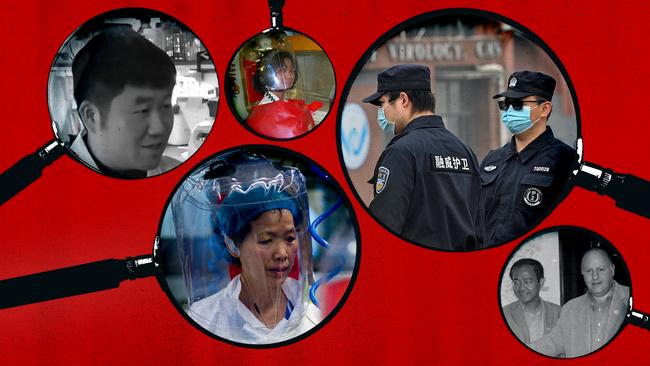

More Coverage
Sharri Markson is the host of 'Sharri' on Sky News Australia, Monday-Thursday at 5pm. She is a two-time Walkley Award winner, the recipient of the 2018 Sir Keith Murdoch Award for Excellence in Journalism, the winner of the 2020 News Award for Investigative Journalism, a winner of four Kennedy Awards - for Journalist of the Year, Political Journalist of the Year, Columnist of the Year and Scoop of the Year - and joint winner of the 2019 Press Gallery Political Journalist of the Year award. Sharri was previously The Daily Telegraph’s National Political Editor, The Australian's Media Editor, CLEO magazine editor, News Editor at Seven News and Chief of Staff and political reporter at The Sunday Telegraph.
Add your comment to this story
To join the conversation, please log in. Don't have an account? Register
Join the conversation, you are commenting as Logout